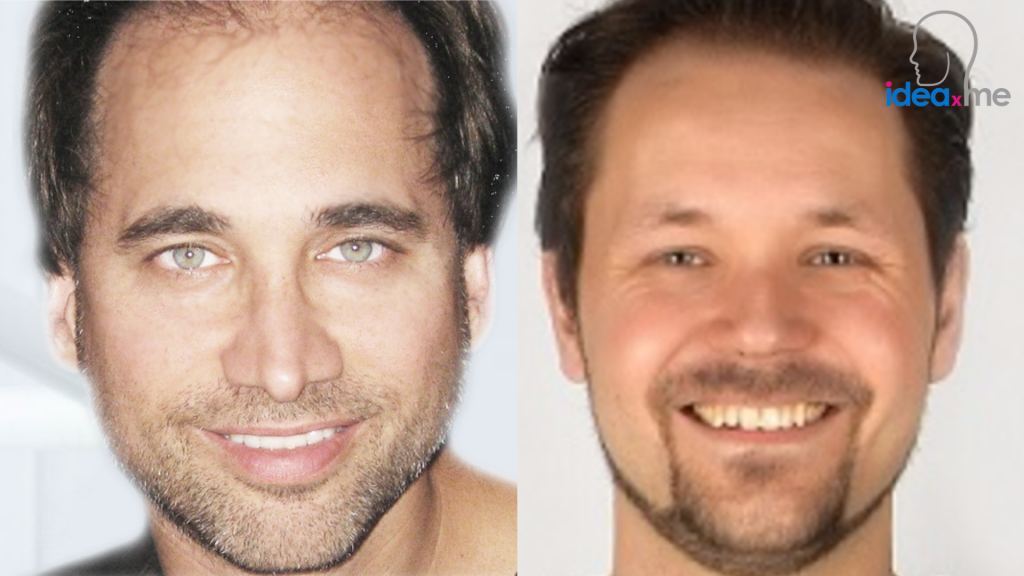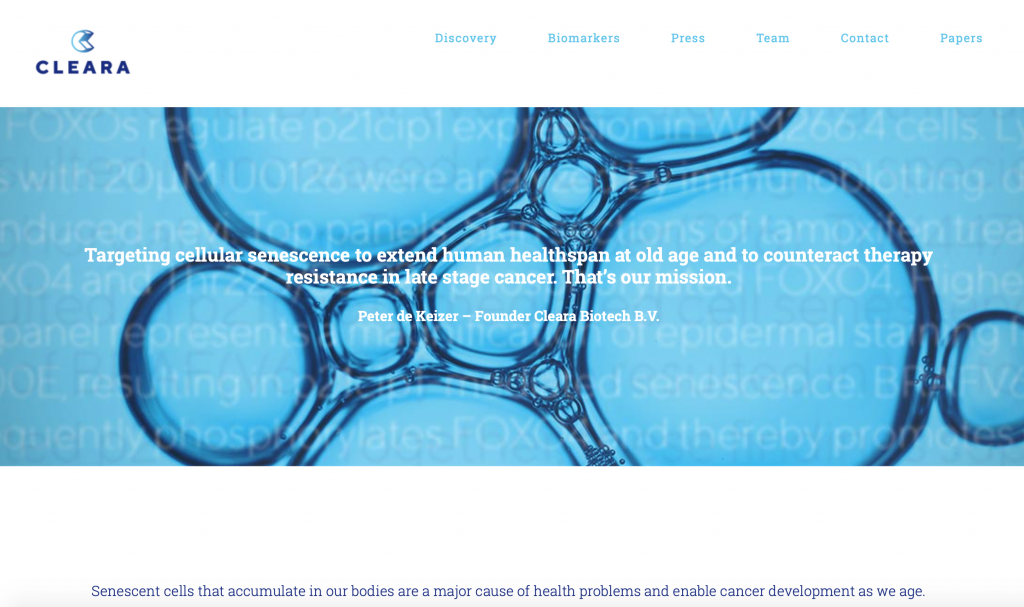Ira Pastor, ideaXme longevity and aging ambassador and founder of Bioquark interviews Peter de Keizer Assistant Professor Senescence UMC Utrecht and Scientific Founder Cleara Biotech. They talk of the breakthrough science of senolytics and how it shows promise to fight aging and cancer in humans. You can listen to the interview on ideaXme’s YouTube channel.

Senolytics to fight aging and cancer
Senescent cells remain present in the body and form a prelude to cancer. Evidence indicates that the removal of senescent cells can improve the healthspan of fast aging mice and inhibit cancer progression, but the mechanisms are not fully understood.
Peter’s long-term objective is to unravel at a molecular level how cells decide to enter senescence of undergo apoptosis and use this knowledge to develop methods to target senescent cells for apoptotic clearance.
The focus of Cleara Biotech B.V. is to develop anti-senescence drugs and optimize these for clinical application against age-related diseases and therapy-resistant types of cancer. Their breakthrough work has been featured both within the science based and mainstream media.
Read Cleara Biotech’s Scientific papers

Ira Pastor comments:
On previous shows we have spent time on the different hierarchical levels of the aging process. We’ve spoken to a broad range of experts in the fields of therapeutic and preventative interventions as it pertains to the diseases and processes of aging.
One area which we have not yet covered, which has recently received a big response from a clinical translation perspective is that of Senolytics.
Senescence is a process by which cells, due to a range of internal perturbations, random DNA damage, or external stresses including xeno-biotics and toxins, will irreversibly stop dividing and enter a state of permanent growth arrest.
The normal purpose of this permanent arrest is to make sure that these cells do not maintain their damaged genomes any further in the organism. Then, via a range of signals that these cells give off, known as the Senescence-Associated Secretory Phenotype or “SASP”, they are set up for selective elimination via apoptosis, stimulated from other cells in the surrounding tissue micro-environment, and /or, circulating immune system cells.
A senolytic, from the combination of words “senescence” and “lytic”, that is destroying, represents a class of therapeutic substances – drugs, biologics, gene therapies, which are being developed to see if it is possible to selectively induce and enhance the elimination of these senescent cells from the body.
Understanding cellular processes to fight aging and cancer
The core thinking, as it pertains to aging, is that as we get older and the elimination of these cells is slowed down for various reasons, the SASP secretions become detrimental to the surrounding tissues and can cause a self-perpetuating cycle of other problems, including inflammation, tissue damage, degeneration, cancer, hence speeding up aging processes.
We will witness in the coming years whether this strategy of increasing their elimination impacts the progression, reversion human diseases and thus healthy aging. The concept being followed is that when we eliminate these cells, and get rid of the SASP, tissues will become healthier and biologically younger. Normal regenerative dynamics will return.
Academic focus on anti aging and cancer
Today’s guest is at the epicenter of research in the space. He takes a broad approach to address this issue. Dr. Peter de Keizer is assistant Professor, Center for Molecular Medicine University Medical Center Utrecht and focuses on Senescence in Cancer and Aging.
Peter obtained his PhD in 2009 from UMC Utrecht on the regulation of Forkhead box (FOXO) proteins under conditions of stress and their role in tumor suppression.
He later joined the lab of one of the pioneers in the field, Professor Judith Campisi, at Buck Institute for Research on Aging, where he focused on the molecular regulation of senescence, identified senescence heterogeneity and generated the first and second generation of compounds to eliminate senescent and therapy-resistant cancer cells.
In 2012, Peter joined the Erasmus Medical Center in Rotterdam, where he designed the third generation of anti-senescence drugs: the FOXO4-DRI peptide, which proved to be effective in animal studies counteracting signs of chemotoxicity and, excitingly, was able to restore certain healthspan features in models of both accelerated and natural aging.
He has recently formed Cleara Biotech to focus on therapeutic development based on his extensive knowledge and expertise in the area of senolytics, focusing on health span extension and cancer resistance.
On the show Peter talks of:
His background and how he became interested in aging and cancer research.
He provides an overview of the good and bad sides of senescence. Elaborates upon his “senescent stem lock” theory, his studies on heterogeneity of senescent cell types and his work in chemotoxicity prevention.
Furthermore, informs us of Cleara Biotech’s mission.
He also tells us whom he would like to meet and why courage is the necessary fuel for moving this complicated and largely unchartered science forward.
Twitter:

Credits: Ira Pastor interview video, text, and audio.
Follow Ira Pastor on Twitter: @IraSamuelPastor
If you liked this interview, we think that you will enjoy Ira Pastor’s interview with Dr Dario Altieri, CEO of Wister Institute.
Follow ideaXme on Twitter: @ideaxm
On Instagram: @ideaxme
On YouTube: ideaxme
Find ideaXme across the internet including on iTunes, SoundCloud, Radio Public, TuneIn Radio, I Heart Radio, Google Podcasts, Spotify and more.
ideaXme is a global podcast, creator series and mentor programme. Our mission: Move the human story forward!™ ideaXme Ltd.


Pingback: Rejuvenation Breakthroughs Against Human Aging - ideaXme